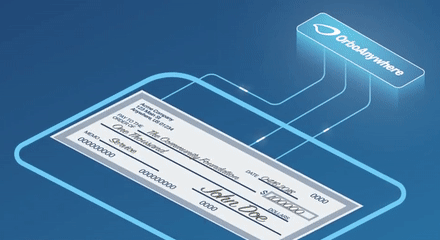Banks Redesigning the Customer Experience with Distributed Banking
Ingo Money CEO Drew Edwards spent time with PYMNTS CEO Karen Webster talking distributed banking -- aka banking-as-a-service -- and how it differs from open banking.
Edwards said that open banking is mostly about moving information, not about moving money between a consumer, her bank, and a third party, like the Robinhood app — at least for now. That data exchange makes it possible for a FinTech to step into the middle of the transaction but also makes the bank little more than the “dumb pipes” that serve as the funding source.

Distributed banking, Edwards told Webster, is a very different concept — one that makes banks a very strategic part of the exchange of money and data between a consumer or a business, a FinTech and a third party.
“[Distributed banking] means being able to, as a bank, enable banking services to be pushed through their corporate clients to their end users — as many end points as possible,” he said. “Banks aren’t invisible, but the FinTechs that may be a part of enabling the transfer of data on behalf of the bank are.”
Edwards believes that distributed banking capabilities, as provided by Ingo and other players, are able to give traditional banks the means by which they can compete with the FinTechs rather than being disrupted by them.
“Many of the successful FinTechs, think of Square, Venmo, Robinhood, Stripe, PayPal, these are disruptors that have all designed and built their own ecosystems and created the relationship with the end user,” Edwards said. “When you sign up for Venmo, you sign up for Square, you sign up with them, it’s their relationship — and consumers send and receive money completely outside the traditional banking ecosystem.”

Mr. Edwards further notes that banks aren’t currently set up to enable many of the distributed banking use cases that corporate customers now expect and require to satisfy their end users.
“Banks are hard-wired for a very defined engagement with their customer — ‘pay someone a thousand dollars tomorrow,’ ” he said. “They’re not designed to reach through an insurance company’s end user customer base, take on the risk of authenticating that end user, offering them a choice for how they want to receive a payment, pay the end user in that way and manage the whole process, including enabling the insurance company’s customer services operations to have the data to tell their customers where the payment is in the process.”
We believe a major requirement in creating an all-encompassing, open banking solution is electronifying paper-payments like checks with a high degree of accuracy. Additionally, extracting data from fields like payee, payor, etc. can add value to the customer experience. As an example, on today's banking statements, there is no payee information automatically added to the statement, only "Check #123." Also, payor data can be used for marketing purposes so marketing groups can engage prospective clients from other originating banks.
